Over the years, hair transplantation has evolved.
Especially after the introduction of FUE and FUT in the early 1990s, the rate of improvement has significantly increased alongside medical advancements in other fields.
Hair transplant surgeries as we know them today are not at all the same process as the one half a century ago, and we have many pioneers in the field of dermatology to thank for it. Various new technologies and techniques have emerged and are still being developed even further.
In this blog, I want to help you catch up with the newest and the latest in hair transplantation in 2024:
Table of Contents
- How did Hair Transplantation Start?
- FUT (Follicular Unit Transplantation) in 2024
- FUE (Follicular Unit Extraction) in 2024
- Newest Technology and Techniques in Hair Transplant Surgeries
- What Is the Future of Hair Transplants?
- Expertise Meets Top-of-the-Line Equipment and Techniques – why UnitedCare?
- Frequently Asked Questions (FAQs)
But first, let’s start from the basics:
How did Hair Transplantation Start?
It was the end of the 1940s when Dr. Norman Orentreich, still a student at the NYU Dermatology Department, started developing an interest in helping patients with pattern balding and bald spots on their scalp.
Through his studies, he became even more invested in this topic and did several experiments. From his results, he has seen that hairs implanted to a specific part of the scalp from other parts didn’t show characteristics of the hairs where it was implanted.
Instead, the newly planted hairs protected the characteristics of the hairs they were harvested from.
This made Orentreich develop “donor dominance”, a concept that he later used to develop his research and go further.
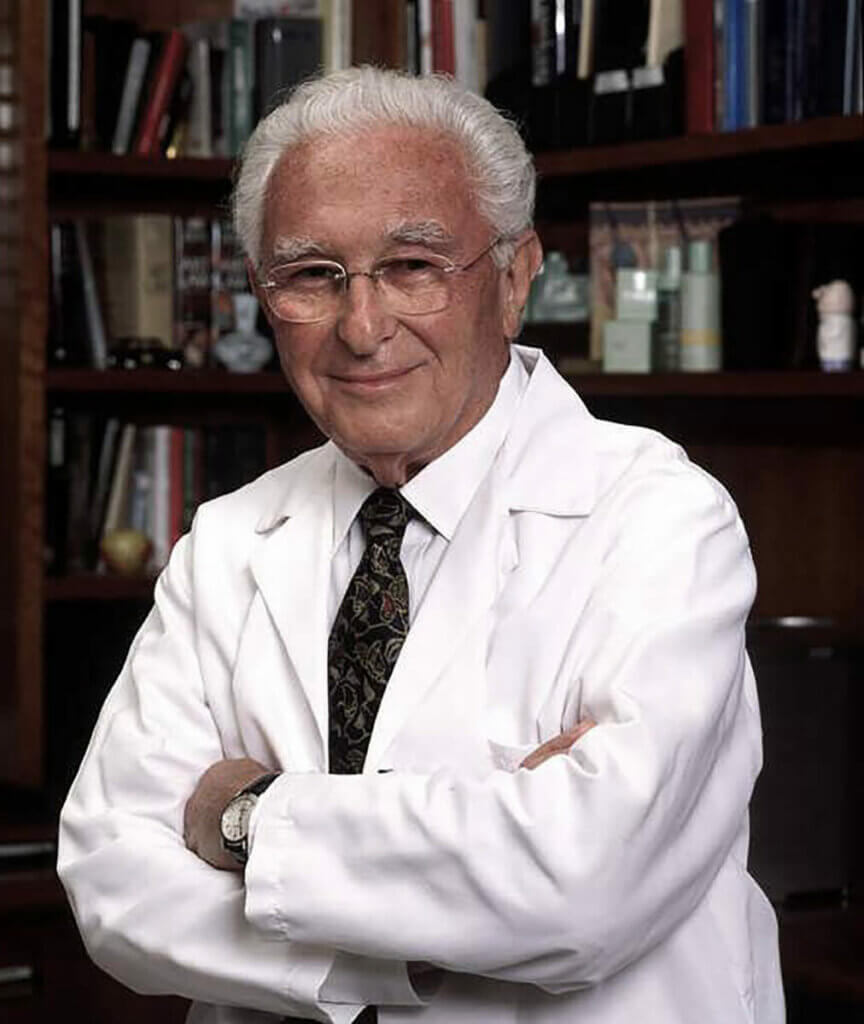
In 1952, he has conducted his first hair transplant surgery, which is also the first modern hair transplant surgery in the world, on a patient with male pattern baldness. This process was called “hair plugging” and was followed by millions of surgeries to this day and kickstarted a billion-dollar industry.
Basically, in these surgeries, the surgeon would punch out a tissue full of hair grafts using a round punching tool (4mm wide). These punched-out tissues were the “plugs” that would then be implanted into the bald areas as they were.
Even though the results weren’t even acceptable in today’s hair transplant standards, it was the prominent hair transplant technique for decades.
Certainly an outdated technique
There were a couple of things wrong with hair plugs that needed to be fixed.
First were the results it produced.
Because of the large tissue that was transplanted as a whole, the implanted hair would be placed in groups, creating doll-like hair as a result. The hairline would be barely restored using this technique and there would also be visible scars on the donor area.
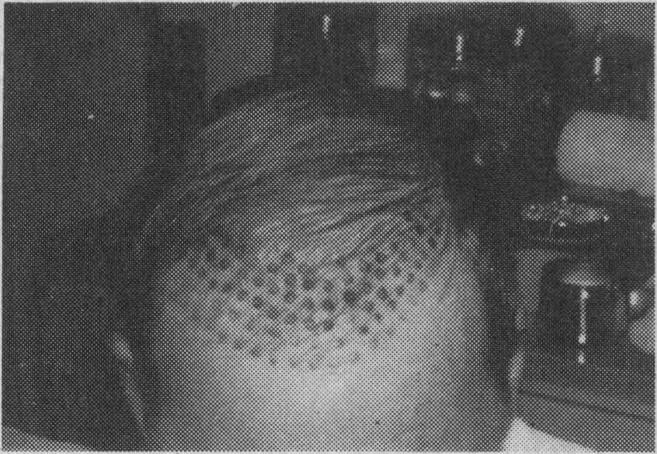
And of course, the procedure itself.
The whole process, for the average male patient with AGA, would take around 16 weeks with 4 sessions 4 weeks apart from each other. Due to surgeons removing and implanting bigger tissue, it would cause pain, and going through the same procedure each month multiple times would end up wearing the patient out mentally.
Thankfully, new and improved techniques were introduced in the early 1990s.
FUT (Follicular Unit Transplantation) in 2024
The first of these newly introduced hair transplant techniques was Follicular Unit Transplantation.
Dr. Bobby Limmer, who came up with the idea of implanting individual grafts into the bald areas to have more control over what the hairline looked like and if it was natural-looking, has done the first FUT surgery in 1988.
You would still extract tissue from the donor area (but in a linear form), however, hair individual follicles would be harvested from this tissue for the implanting stage.
And then, these individual follicles would be implanted into the bald areas after small incisions were made by the surgeon.
FUT became popular and quickly replaced hair plugs worldwide by the end of the 90s.
A lot of celebrities that had their hair transplant in the early 2000s most likely had FUT, including Elon Musk, John Travolta, Ben Affleck, and David Beckham.
By 2024, the FUT surgical technique had become outdated and was significantly less common.
FUE (Follicular Unit Extraction) in 2024
The other hair transplant technique that was developed to fix hair plugs was Follicular Unit Extraction.
FUE was also developed around 1988, and the first FUE surgery was done in 1989 by Dr. Ray Woods. But FUE didn’t take off as quickly as FUT did.
It wasn’t until 2002, when Dr. William Rassman and Dr. Robert Bernstein introduced FUE to the world in an article, that FUE became popular.
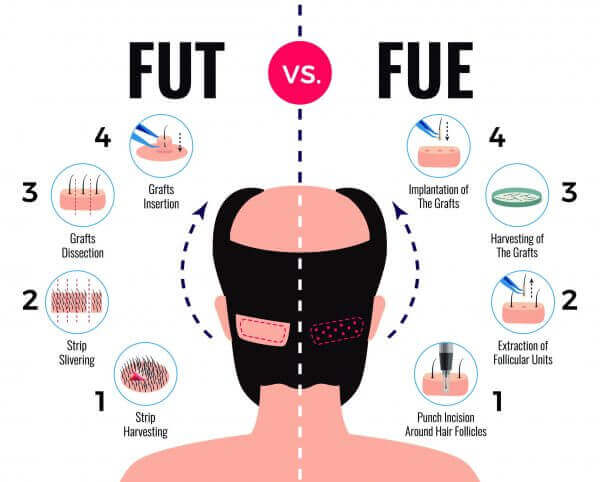
Although being exactly the same as FUT in the implantation stage, FUE introduced the extraction of individual hair follicles right from the donor area; which would result in minimal to non-detectable scarring.
It requires more precision and expertise, but since it doesn’t leave any linear scars on the back of your scalp, FUE started to replace FUT in some clinics.
With time, more and more clinics started to prefer FUE to FUT because of the perfect results, and according to hair loss statistics, 2 out of 3 hair restoration surgeries worldwide are FUE.
That’s why the newest technology and techniques in the hair transplantation field are built on FUE.
Newest Technology and Techniques in Hair Transplant Surgeries
Of course, FUE vs FUT, which were both introduced almost 30 years ago, aren’t the latest innovations in hair transplantation.
There are many promising innovations that were developed and introduced ever since. Here are the five prominent of these technologies, practices, and techniques used in hair transplant surgeries:
1- Sapphire FUE
As I’ve mentioned before, during the implantation part of a hair transplant procedure, the surgeon first makes an incision and then carefully plants the hair inside this incision.
With steel blades that are usually used in medical surgeries, these incisions can’t go any smaller than a certain amount. As the name of this technique suggests, sapphires are used instead of steel blades for making incisions.
Sapphire is much more durable, sharper, and smoother than a steel blade. These traits provide the surgeon who’s using it with the ability to make even smaller incisions.
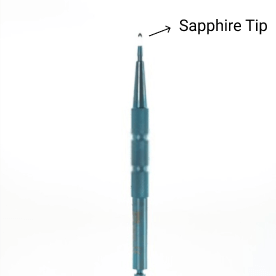
With smaller incisions made by Sapphire FUE:
✅ The implantations are much more accurate and the end results look significantly better.
✅ Since the incisions are small, the trauma to your scalp is also small, allowing for a faster recovery and better survival.
2- Direct Hair Implantation
What’s better than making smaller and more precise incisions?
Making no precuts at all.
That wouldn’t usually make sense, but it does in the case of DHI, invented by DHI Medical Group in 1999.
In this method, a DHI implanter pen replaces both steel or sapphire blades and the forceps used during the implantation step. Instead, with the help of the implanter pen, the surgeon can implant the hair follicles in just one step, reducing the time and effort implantation takes.
Also, since the forceps used in planting the hairs are tiring and hard to control, the implanter pen allows surgeons to work more effectively.
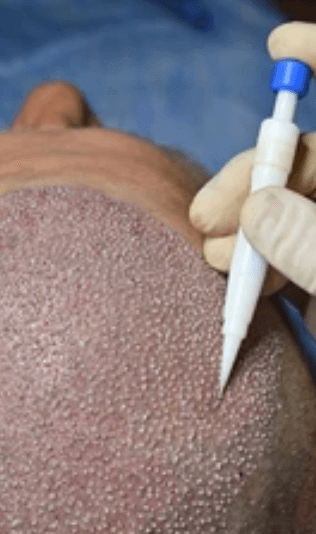
With DHI:
✅ The implanter pen allows for better control of the angle, so the results are more natural.
✅ And since there are no precuts (the incision before implantation) made, there is even less trauma affecting the scalp resulting in better recovery.
❌ But, the implantation part of the surgery takes more time and maximum grafts transplanted in a session is limited.
3- Robotic Hair Transplants
Robotic hair transplants are one of the most recent developments, only been around for a decade or so. It sounds exciting and promising when you add robotics to any field in medicine, and in this case, it’s completely justified.
ARTAS hair transplant robot, introduced by Dr. William Rassman and Dr. Robert Bernstein in 2007 and approved for use in 2011, is an innovative step to the future.
The robotic system currently has two main functions.
The first one is the harvesting of follicular units from the donor area. With ARTAS, no work from the surgeon is needed for graft harvesting, the system can do it based on the planning that’s been done.
And the second one is the 3D modeling of the patient’s scalp, to both visualize the operation and to simulate end results.
Although the whole hair restoration procedures can’t be automated, the current functions of ARTAS definitely promise a much more improved version of hair transplantation in the future.
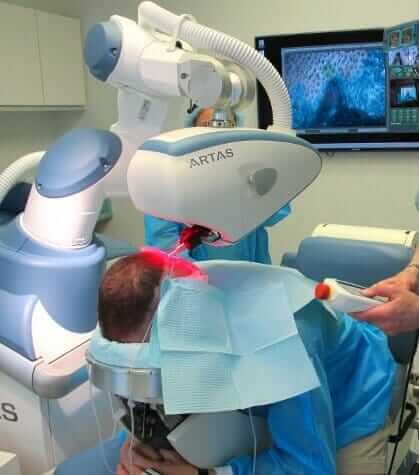
With ARTAS:
✅ The surgeon can focus on the implantation part of the surgery and provide better results.
✅ The patient and the surgeon can plan in a 3D environment, allowing them to be on the same page.
4- Bio-enhancements
Bioenhancements are not a direct modification of FUE or FUT, but a supplementary process to boost graft survival and growth.
Introduced by Dr. Jerry E. Cooley in 2014, bio-enhanced hair transplants are done through the usage of liposomal ATP, ACell, and HypoThermosol during the surgery to supplement and support newly planted hair grafts.
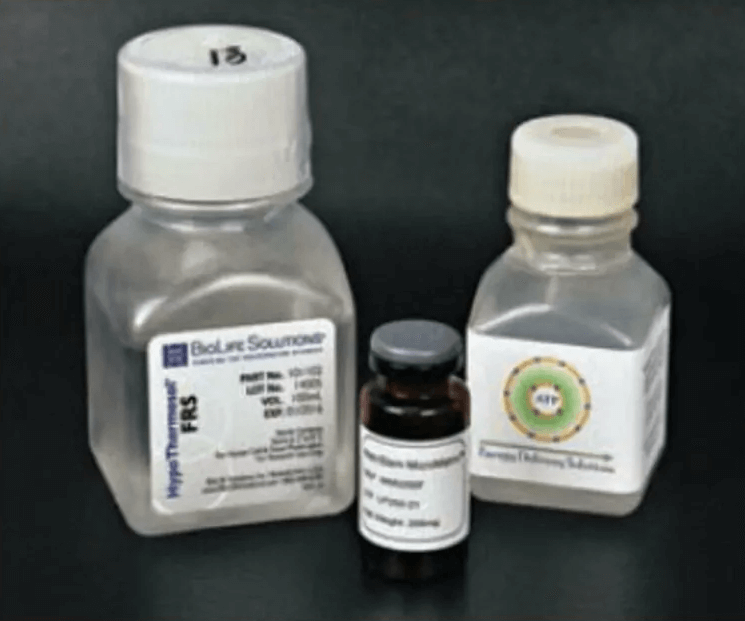
Used in many high-end clinics in the USA, UK, Canada, and Europe, bio-enhancements are the latest addition to UnitedCare‘s hair transplant procedures.
Organ transplant solutions such as HypoThermosol and Custodial, ATPv – which is the primary energy source of the live hair cells – and PRP are considered bio-enhancements in hair restoration. These solutions provide the best medium for recovery and growth for sensible grafts that are very fragile during hair transplantation.
Bio-enhancements have replaced cheaper storage solutions that are still being used by many clinics, which could cause grafts to fail.e.
However these solutions are very high tech and only produced by the most developed countries. Therefore they are expensive.
Certainly! Here’s a revised version with an emphasis on the limited nature of donor hairs:
But, in the end, they are worth it because the primary source for hair transplants is the patient’s own donor hairs, recognizing that these valuable resources are limited.
✅ With bio-enhanced hair transplants, graft survival, and growth can be drastically improved for quicker and better results.
❌ Bio-enhancements can increase the surgery price up to €500-600.
5- NeoGraft Technique
NeoGraft is another automated system to help improve the harvesting phase of hair transplant surgery. It is actually a kind of improved FUE method.
It uses suction to pull out individual hair follicles loosened by a special device from the donor site. Then, NeoGraft no-touch follicle implantation is done with special tools. As it is in the DHI procedure, the incision and implantation stages are simultaneous.
✅ With NeoGraft, the surgeon can avoid using manual punching tools on the donor area, so the harvesting process is done quicker and with the least amount of trauma possible.
✅ The inventor claims that the Neograft technique is faster than FUE.
❌ The Neograft technique incurs an additional cost, and the added benefits of this expense are not clear.
6- Stem Cell Hair Transplants
Stem cell treatment uses a person’s own stem cells to stimulate new healthy cell growth or existing cell repair to treat a condition or illness.
Another exciting improvement to hair transplantation is using these stem cells for healing damaged follicles.
In stem cell hair transplant surgeries, stem cells are harvested from your blood or bone marrow and then injected back into your scalp’s balding areas.
This way, your hair follicles are given your own healing agents, and these stem cells reinforce damaged cells to revert years for your scalp.
ℹ️ There is no approved & commercial method to grow NEW HAIR FOLLICLES. Suppose a clinic claims to have a Stem Cell Hair Transplant. So, it is actually to revitalize the existing hair and support the newly planted hair with Regenera Activa Stem Cell Therapy.
What is Rigenera Activa Stem Cell Treatment?
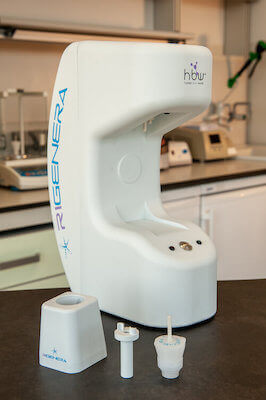
You might think of Rigenera Activa therapy as the ultimate PRP injection. However, instead of using blood to generate Platelets, this method uses a small sample (a punch biopsy) of donor zone scalp tissue to extract the progenitor cells, growth factors, and extracellular matrix.
These cells, growth factors, and matrix are injected into the recipient zones after the hair transplant to boost the regenerative activity of hair cells.
This method is based on promoting the self-regeneration of hair follicles, a.k.a Autologous Micrografting Technology.
Regenera Activa stem cell hair transplant machine extracts the necessary sample from the patient’s biopsy while keeping the cellular structure intact. It has special kits (as PRP has special kits) to make the serum ready for injection in 2-6 minutes.
✅ Stem cell hair transplant boosts hair growth and is much stronger than PRP
✅ The punched areas in the donor zones are quickly healed and leave no marks.
❌ However, new hair doesn’t regrow in punched areas because progenitor hair cells are utilized in balding zones. The extremely small bald donor spots are virtually imperceptible to the naked eye.
7- KE-Bot Mobile
KE-Bot Mobile is one of the newest FUE innovations developed by Dr. Koray Erdogan.
It is a 360-degree scanning system that assesses a patient’s head and hair and outputs 3-D scalp modeling and some crucial data, including:
- Each hair’s shaft diameter and caliber
- Hair density in the donor area
- The total donor capacity
- The coverage value
- The number of grafts extracted in previous hair transplant surgeries.
After the hair transplant, the KE-BOT mobile shows:
- The exact number of grafts implanted
- The recipient area hair density
- The transection rate (the ratio of damaged or amputated hairs)
Here is the video prepared by Dr. Koray Erdogan explaining KE-Bot in more detail:
ℹ️ KE-Bot Mobile is actively used by Dr. Utkan Kiziltac in UnitedCare’s hair transplantation surgeries.
✅ Basically, KE-Bot mobile equips the surgeon with important data. This data is important to plan the surgery for the best result without overharvesting and leaving room for future hair transplants.
Also, post-surgically, the patient can understand whether the surgery was successful or not by looking at the KE-Bot Mobile data.
8- Edge Out Punch
The sharp cutting edge on the outer diameter of the edge-out punch effectively guides the graft toward the center of the punch lumen, minimizing the risk of follicle transection and ensuring a safer and more efficient procedure.
This enables a more confident approach to hair transplantation, with reduced chances of complications.
Edge-out punches have significantly reduced my hair transplant’s amputation rate, the ratio of successfully extracted grafts to the total number of extracted grafts.
Dr. Utkan Kızıltaç
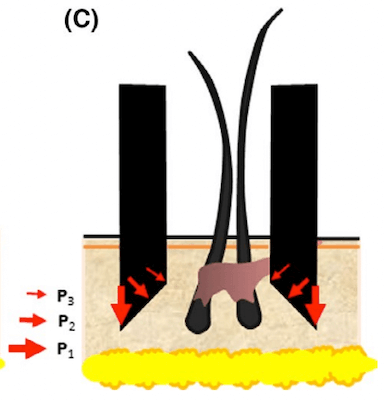
9- Custom Hairline Design Techniques
Laser-assisted hairline drawers, a.k.a laser hairline designer devices, are indispensable for hair transplantation.
However, almost no head is symmetrical, so the left side of the hairline will almost never be the same as the right side of the hairline.
Also, various other crucial factor plays a role in determining the most natural hairline, such as
- Forehead muscles
- Face and Bone Structure
- Ethnicity
- Age
- Balding Severity
- Donor Capacity
This is where the hair transplant surgeon’s advanced mathematical calculations come into play, ensuring the patient receives the most natural-looking hairline.
Here’s my hair transplant case showcasing the carefully designed custom hairline and overall result after 6 months.
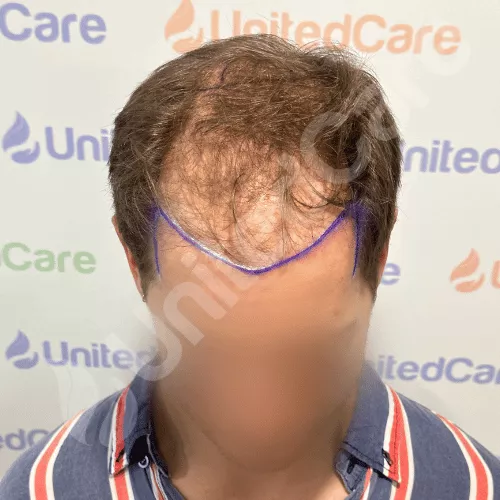
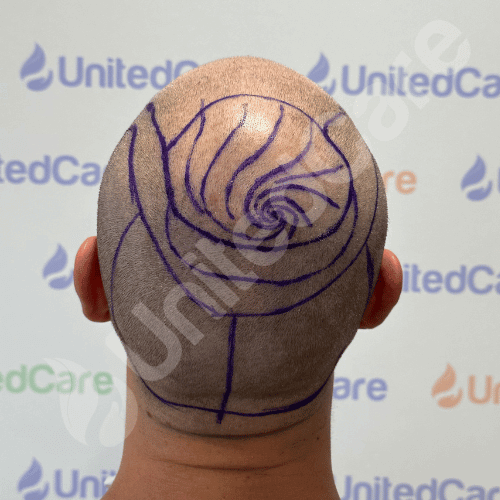
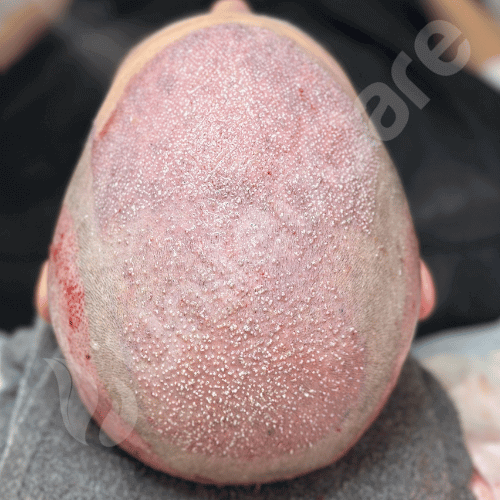
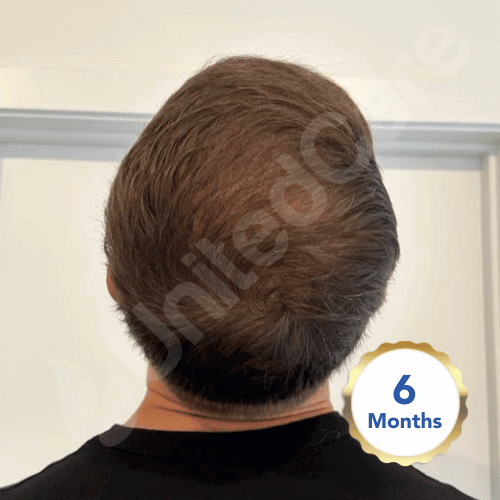

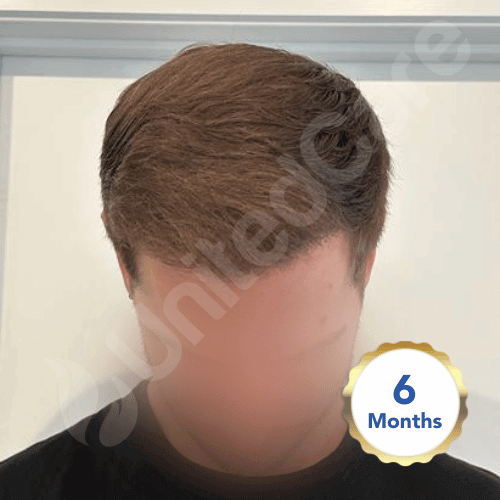
What Is the Future of Hair Transplants?
We can see it decreasing even further in the future, especially with proactive solutions to hair loss such as finasteride becoming more and more common, removing the need for hair transplants when used at the right time.
But, hair transplant surgeries will be around for a long time, with more advanced methods being more common and new technologies being introduced.
Here are a few changes I am sure we will see in the following years and decade:
Widespread use of robotics and AI
Robotic technologies such as ARTAS and Ke-Bot will be more available in a lot more clinics in the following years, as percentage of robotic-assisted FUE in all hair transplant surgeries went up from 5.3% to 6.4% in the last 3 years.
I even think there will be new robotics systems introduced that will be affordable by smaller clinics, and we will definitely see AI applications that detect the stage of hair loss + that can show results of a possible hair transplant will be available to patients.
Bio enhancements with every hair transplant
Bio enhancements are used in a lot of clinics in the US and UK, but the rest of the world still need some catching up to do.
As a pioneer of using bio enhancements in Turkey, I can confidently say most clinics will use these supplementary treatments to achieve better results.
Artificial hair transplant
The biggest issues we have with hair transplants possibly are the limited supply of donor grafts and that we need to harvest hair from the back of the scalp, making it look thinner or have tiny scars.
There are currently different research teams that are working on lab-grown hair follicles, which would remove the need for harvesting hair grafts from the patient.
Yes, it will be more costly than a regular hair transplant, but it will definitely help patients who don’t have enough grafts to cover the balding areas achieve natural results.
Expertise Meets Top-of-the-Line Equipment and Techniques – why UnitedCare?
Many clinics overlook this, but, there is always room for improvements in hair transplant surgeries.
That’s why we’ve adopted various technologies and advancements at UnitedCare to perfect the results we’re providing our patients.
UnitedCare‘s expert dermatologist surgeons will help you live a hair loss-free life with the help of top-of-the-line techniques and technologies such as Sapphire FUE, Direct Hair Implantation, and Bioenhanced Hair Transplantation, with the affordable prices of Turkey.
It all starts with your free consultation and hair loss analysis: 👇
Hair transplantation is much easier with 2024 technologies.
Minimally invasive techniques and bio-enhancements will give you the desired natural look.
Frequently Asked Questions (FAQs)
Which is the best hair transplant technique?
Advanced variations of FUE such as Sapphire FUE and DHI backed by Bioenhancements, are considered to be the best for natural-looking results and optimal success rates. When adopted, these technologies also boost the recovery rate and survival chance of planted grafts.
Is DHI better than FUE?
DHI is certainly an improvement to FUE, as the DHI implanter pen allows the surgeon to be quicker and more precise without getting tired. But, some surgeons and clinics insistingly prefer Sapphire FUE, claiming the results are better with sapphire tips.
What is the latest technology for hair transplants?
The latest developments in hair transplant technology are: NeoGraft (2009), ARTAS Robotic System (2011), Bio-enhanced Hair Restoration (2014), and Ke-BOT (2019).
Is hair transplant technology improving?
Less than 30 years ago, hair plugging was the only hair transplant method available. Today, there are numerous advanced variations for FUE and FUT, so it is safe to say that hair transplant technology is rapidly improving in 2024.
Are hair transplants getting better?
Hair transplants have come a long way and are improving drastically over the years. As a growing industry and more and more patients want to return to their natural looks, hair transplants will get better and better alongside the advancement of technology.
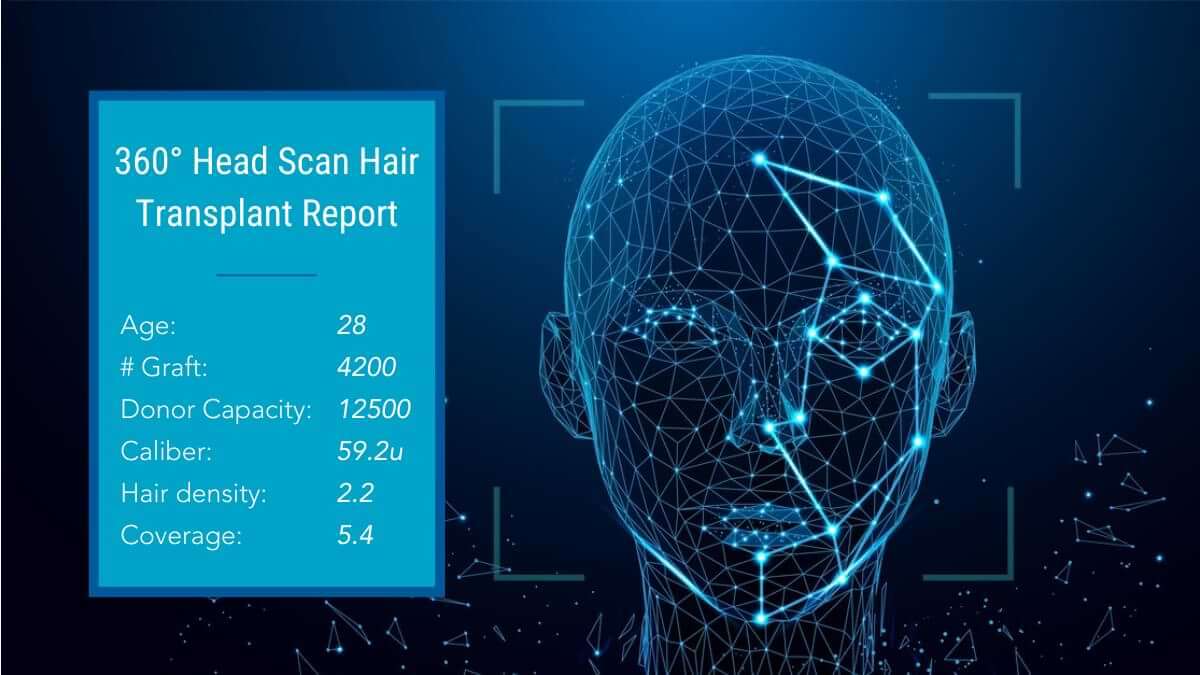

What is the cost of each one of these procedures and are they available in Connecticut or the East Coast and is there a price difference from the East Coast to another part of the country which would be more reasonably priced
Hello William,
Can’t tell the exact costs of these procedures in the US, but you can check out “USA hair transplant costs” section of the related article.
Apart from that, Turkey has the lowest average hair transplant costs worldwide, and some of the procedures listed above are performed in Turkey.
And if you would like to check my clinic’s prices for some of these procedures, you may visit our pricing page.
Best.
am a 50-year-old woman with androgenetic alopecia, especially on the top (at the front) I suffer from hair loss.
What would be best for me? Which method?
Won’t the hair just fall out again because I have androgenetic alopecia?
Kind regards Kim Smit
Hello Kim,
If the hair loss in the affected area is significant, the FUE technique would be the better option. However, if your hair loss is not that bad and you still have hair in the recipient area, you can opt for the DHI FUE technique.
The hair follicles that are extracted from the donor area are less sensitive to hormones, which means they are not affected by androgenic alopecia.
Feel free to benefit from our free consultation service. So I can look at your photos and give you more precise information.
Best.